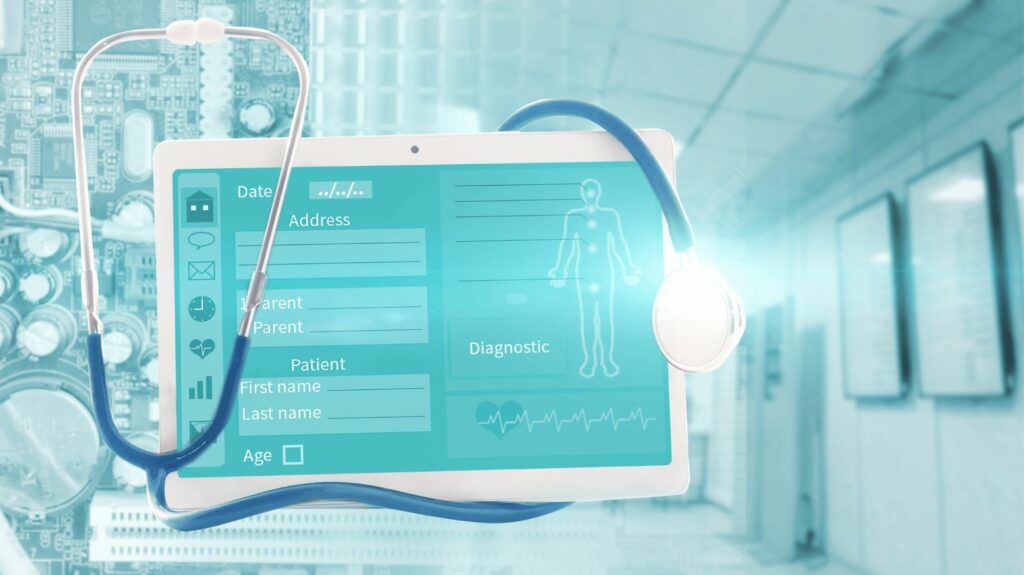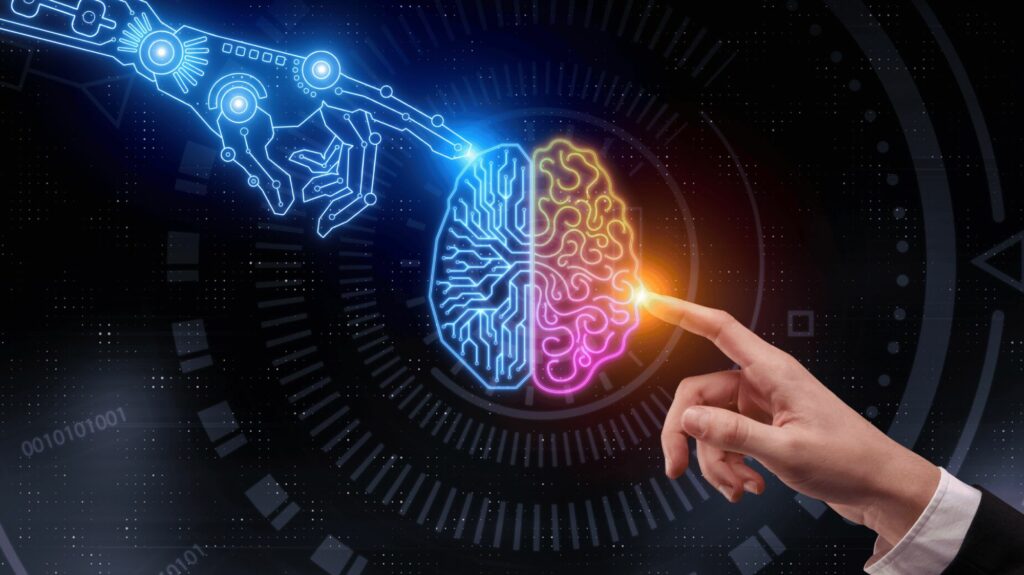Healthcare organizations must conquer billing, R&D, pharmacy, and patient data to provide the highest quality care.
The volume of healthcare data has skyrocketed from 153 exabytes in 2013 to 2,314 exabytes in 2020.
How can healthcare technology companies and providers best act on the insights and medical intelligence from this vast data pool?
It starts with healthcare data integration.
Let’s look closer at the challenges and best practices for data integration in healthcare.
What is Data Integration in Healthcare?
Data integration in healthcare merges multiple healthcare data sources into a single, unified dataset. It grants healthcare providers access to the latest and most relevant data.
Data integration breaks down data silos and provides organizations with a single source of truth (SSOT). The SSOT requires data to be precise, consistent, and up-to-date for effective decision-making across the organization. To make this integrated data usable, it must undergo thorough cleansing and transformation to ensure a standardized format.
Seamless data integration in healthcare enables interoperability, allowing healthcare systems to communicate and enhance care with a complete view of patient care delivery.

Common Data Integration Technologies for Healthcare Systems
Healthcare has seen remarkable recent advances in data integration technologies:
- Extract Transform Load (ETL)
- Enterprise Information Integration (EII)
- Enterprise Data Replication (EDR)
- Data Visualization

1. Extract Transform Load (ETL)
ETL powers most healthcare data integration across organizations. ETL extracts and converts data and loads it into a storage system. ETL efficiently handles large-scale batch integrations and smaller incremental loads using change data capture (CDC). It also supports data cleansing, quality assurance, aggregation, and reconciliation.
2. Enterprise Information Integration (EII)
EII allows organizations to access on-demand data, forming a business view of relevant data sources. You will have a user-friendly interface to query data, while the backend handles connections to different sources with various formats and interfaces. EII lets users analyze and report based on real-time data integration.
3. Enterprise Data Replication (EDR)
EDR data consolidation replicates complex data from different sources and loads it into target destinations at real-time intervals. Unlike ETL, EDR focuses solely on data movement, transformation or manipulation.
4. Data Visualization
Analytics and reporting platforms provide easy data access for business intelligence. They have built-in connections to common data sources, allowing quick data visualization through dashboards, reports, charts, and different formats.
Challenges of Data Integration in Healthcare
Huge data volumes and complexity create challenges for healthcare. Here are some obstacles to integrating data that make it harder for healthcare professionals from extracting valuable insights:
- Lack of standardization and interoperability
- Data privacy and security
- Implementation and maintenance cost

1. Lack of Standardization and Interoperability
A lack of data standardization causes duplicate records, system failures, and inaccurate insights that diminish patient care. Also, the use of different data formats among providers hinders communication and data sharing, leading to data quality issues.
Making traditional legacy systems connect with newer cloud-based systems further compounds the challenges of EHR/EMR data integration. Lack of interoperability among healthcare systems and providers also creates obstacles for real-time data sharing.
2. Data Privacy and Security
In 2023, more than 540 organizations reported healthcare data breaches to HHS, affecting more than 112 million individuals.
Data integration in healthcare must ensure security, safeguard patient data, and maintain trust.
3. Implementation and Maintenance Cost
Healthcare data integration systems require investment in software, hardware, training, and services. Continuous maintenance of healthcare integration systems includes software upgrades, system monitoring, technical assistance, and staff education. These recurring costs can inflate operational budgets.
Learn more about how to navigate these roadblocks: Overcoming Common Challenges in Implementing Healthcare Data Integration Systems.
Best Practices for Seamless Data Integration in Healthcare
These best practices for data integration in healthcare will help enhance your data utilization:
- Know Your Data
- Leverage Cloud-Native Architecture and APIs
- Train Your Team on FHIR Standards
- Utilize Analytics Tools
- Authorize Data Access and Management
- Safeguard Your Data
1. Know Your Data
Before talking about data accumulation, healthcare organizations should define the types of data they need to collect. This helps data teams better comprehend the data requirements for healthcare providers and make necessary adjustments or implement technology accordingly.
Begin with these questions:
- Do your healthcare provider clients implement EHR/EMR systems? If so, do these systems meet their requirements, or do they require enhancements?
- What needs do healthcare provider staff/patients have that are not currently met by existing systems?
- How are providers using existing systems? Do they aim to enhance care delivery and quality, minimize operational expenses, or allocate medical resources?
Addressing these questions will help you refine your data integration strategy and capture the right data in later implementation stages.
2. Leverage Cloud-Native Architecture and APIs
The extensive and geographically dispersed nature of medical data in the cloud requires API-enabled architectures, which streamline data connectivity.
In healthcare, a hybrid, cloud-native solution can enable real-time access to fragmented patient data from multiple sources.
3. Train Your Team on FHIR Standards
Your development team can structure data using standardized formats such as Fast Healthcare Interoperability Resource (FHIR). This widely adopted healthcare data exchange protocol helps integrate different systems, taking into consideration the intricate nature and sensitivity of medical data. Additionally, FHIR standards provide guidelines for utilizing APIs.
4. Utilize Analytics Tools
Successful data integration in healthcare requires connecting your data to analytical tools to ensure secure and scalable connections between databases and eliminate concerns about future expansions and security vulnerabilities.
5. Authorize Data Access and Management
Data-based choices in healthcare can determine life or death. But decision-makers often lack real-time access to the necessary information.
Providers and software vendors must organize and grant appropriate data access to key personnel for seamless communications and efficient management of healthcare data.
6. Safeguard Your Data
Healthcare organizations must comply with strict data privacy regulations such as HIPAA, HITECH, and HL7.
The Future of Health Data: Integrated Data for Integrated Care
Data integration in healthcare has evolved beyond just technical advancement, no longer revolving around merging different data flows and instead redefining data-driven care as the backbone of modern patient care.
As EHR adoption has expanded, so has the competition among EHR vendors.
About 96 percent of hospitals now embrace EHR technology. A single healthcare system can have up to 18 different EHR platforms.
This real-time EHR data integration presents a unique chance to enhance clinical effectiveness during patient care. Integrating data can consolidate complex health information from various sources, identify gaps in care, and uncover opportunities for improvement. Providers can see these valuable insights directly in their EHR system and easily review them as part of the patient care process.
Also, the development of cloud computing has democratized access to advanced data integration tools, allowing even smaller healthcare providers to take advantage of unified data. This increased accessibility fosters a cohesive data environment, promising a seamless sharing of patient data across platforms.
Healthcare data integration advances a more empathetic and omnichannel approach to patient care that is highly responsive, tailored to individual needs, and capable of delivering personalized patient care.

FAQs about Data Integration in Healthcare
We have compiled a comprehensive list of frequently asked questions (FAQs) to help you better understand and navigate data integration in healthcare:
1. What is Data Integration in Healthcare?
Data integration in healthcare refers to the process of merging and consolidating healthcare information from diverse sources. This establishes a comprehensive overview of patient data from various systems, including electronic health records (EHRs), medical devices, and other healthcare applications. This facilitates data exchange, promotes interoperability, and enhances care coordination.
2. What are some Data Integration Challenges in Healthcare?
Integrating healthcare data presents numerous challenges, including lack of standardization, interoperability issues, data privacy, security, and budget constraints.
3. Why is Data Integration important in Healthcare?
Healthcare data integration provides a comprehensive view of patient information, enabling better care coordination and improved decision-making. By integrating data from various sources, such as electronic health records, medical devices, and other healthcare systems, healthcare providers can gain a complete understanding of a patient’s health history. This enables more accurate diagnoses, personalized treatment plans, and improved patient outcomes. Additionally, data integration enhances operational efficiency by reducing manual data entry and streamlining workflows.
4. What are Best Practices for Healthcare Data Integration?
Several best practices for data integration in healthcare ensure successful implementation and optimal outcomes, including:
- Define Clear Data Integration Objectives
- Leverage Cloud-Native Architecture and APIs
- Train Your Team on FHIR Standards
- Utilize Analytics Tools
- Authorize Data Access and Management
- Safeguard Your Data
Enhance Your Data Integration Practices with KMS Healthcare
Integrating healthcare data enhances care delivery. The long-term benefits easily outweigh the upfront costs for providers and amplify the value of healthcare software vendor solutions.
KMS Healthcare commits to providing reliable healthcare data integration solutions. We use open standards to ensure interoperability and offer modular approaches to overcome data integration challenges. We bridge technology gaps for the smooth implementation and maintenance of your healthcare integration systems.
As your reliable partner, KMS Healthcare tackles the complexity of healthcare data integration, tailored to your needs and goals. We ensure compliance with industry standards and privacy regulations for healthcare data integration.
Contact us now and learn how to take the first step towards an integrated, cloud-enabled, AI-driven future in healthcare data.

References
Capital Markets, R. (n.d.). Episode 1: The healthcare data explosion. RBC Capital Markets. https://www.rbccm.com/en/gib/healthcare/episode/the_healthcare_data_explosion
Coppola, L. M. (n.d.). How data-driven approach is revolutionizing the healthcare industry. Datavid. https://datavid.com/blog/data-driven-healthcare
Healthcare, D. (n.d.). 10 most common inpatient EHR systems by market share. Definitive Healthcare. https://www.definitivehc.com/blog/most-common-inpatient-ehr-systems
Health Level Seven International. (n.d.). HL7.org. https://www.hl7.org/
HIPAA Home. (n.d.). HHS.gov. https://www.hhs.gov/hipaa/index.html
IT News, H. (n.d.). Why EHR data interoperability is such a mess in 3 charts. Healthcare IT News. https://www.healthcareitnews.com/news/why-ehr-data-interoperability-such-mess-3-charts
Kluwer, W. (n.d.). Capturing the right data to power better healthcare. Wolters Kluwer. https://www.wolterskluwer.com/en/expert-insights/capturing-right-data-power-better-healthcare
Learn, M. (n.d.). What is change data capture (CDC)? – SQL Server. Microsoft Learn. https://learn.microsoft.com/en-us/sql/relational-databases/track-changes/about-change-data-capture-sql-server?view=sql-server-ver16
McKeon, J. (n.d.). This Year’s Largest Healthcare Data Breaches. HealthITSecurity. https://healthitsecurity.com/features/this-years-largest-healthcare-data-breaches
McSwine, D. (n.d.). Complexity in the US Health Care System Is the Enemy of Access and Affordability. JAMA Network. https://jamanetwork.com/journals/jama-health-forum/fullarticle/2811354
Medicine, S. (n.d.). Stanford Medicine 2017 Health Trends Report: Harnessing the Power of Data in Health. Stanford Medicine. https://med.stanford.edu/content/dam/sm/sm-news/documents/StanfordMedicineHealthTrendsWhitePaper2017.pdf
MuleSoft. (n.d.). What is a Single Source of Truth (SSOT). MuleSoft. https://www.mulesoft.com/resources/esb/what-is-single-source-of-truth-ssot
Stedman, C. (n.d.). What is Data Cleansing (Data Cleaning, Data Scrubbing)? TechTarget. https://www.techtarget.com/searchdatamanagement/definition/data-scrubbing
What is FHIR? (n.d.). The Office of the National Coordinator for Health Information Technology (ONC). https://www.healthit.gov/sites/default/files/2019-08/ONCFHIRFSWhatIsFHIR.pdf


